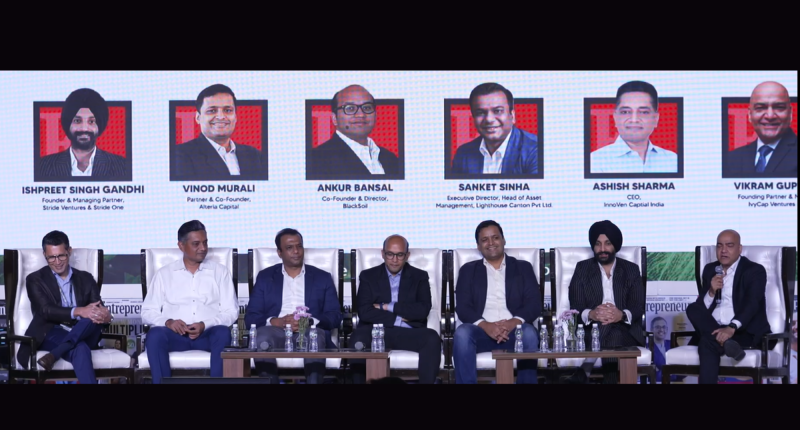
Opinions expressed by Entrepreneur contributors are their own.
You’re reading Entrepreneur India, an international franchise of Entrepreneur Media.
Along with venture capital (also known as equity), venture debt financing is gaining traction in India. Consider this: Between January and June 2023, Indian start-ups raised over USD 260.7 million in debt as compared to the total funding of USD 3.8 billion seen during the same period, that’s nearly 7 per cent of the total amount.
For the uninitiated, Venture Debt Financing refers to start-ups raising funds without diluting their ownership, much like a loan taken from VCs, PEs, or Angel Investors. The good part about opting for debt financing is that each deal can be customized according to the investor-investee agreement. Other benefits include access to additional capital and strategic support and network available.
During a panel discussion on ‘Debt funding-The State of the venture debt market‘, at the Entrepreneur 2023 Summit in New Delhi, the panelists discussed how the venture debt fund scene is growing in the country and what investors’ expectations are while extending this kind of money to the founders.
Participating in the discussion, Ishpreet Gandhi, Founding and Managing Director, Stride Ventures and Stride One said, “The year 2015-16 was a tipping point when we saw venture capital funds more active. Over a period of time, the way a venture debt is construed is that it comes on top of equity round. The year 2021 was the further accelerated year for a lot of venture debt deployment but post that since the equity flow has reduced 12-18 months, the awareness is leading into more fueling of taking venture debt as an asset class and use cases have emerged. We see the demand and awareness at an all-time high in terms of various structures. We are just getting started.”
According to Vikram Gupta, Partner, Ivy Ventures, venture debt as an asset class has evolved, and India is very clearly ready for absorbing a lot more of it. “As an equity investor, we are seeing 10-12 term sheets coming from different venture debt funds. It’s important to see what differentiates one from the other. And they are building their own differential strategies. They bring very different kinds of value to the table which is good for the ecosystem as entrepreneurs are matured and they know who they should choose as their partner and it’s only building up.”
Market getting mature
Says Vinod Murali, Managing Partner and Co-Founder, Alteria Capital, “There is market maturity which is visible. Earlier, there was paucity of capital in general. India has come a long way. Despite all the gloom and doom in funding, if you look at the sources of capital, we are seeing a lifetime high for every investor in India. So India focus strategies today have the deepest pocket. The economy is looking fundamentally healthy. Having said that there is a lot of pain in the funding-deals takes more time but I am happy with the quality of the founders today. There are 500 unique companies which are funded. So there are 500 founders who have tasted debt.”
“As people are becoming capital efficient in this new area, people are realizing the value of venture debt very early on. In the past, venture debt was considered part of rounds, but now from early stage and pre series A want to find a way to have a small component of debt and see how it works and use it for strategic purposes and based on that a more sustainable business,” said Ankur Bansal, Co-founder and Director, Black Soil.
Different risk-return class
Ashish Sharma, CEO, InnoVen Capital India explains venture debt funding is a different type of risk return asset class. “Risk return here is we do not want to take as much risk as early stage equity investors would and our return expectations are lower. We want to maximize the upside but want to protect the downside because in our model, we can. When we look at companies, apart from numbers, unit economics, we have to always first think about the credit risk. Valuations come second. Would I get my money back? We want to make sure that there is a clear use case of debt that the founders and existing investors are thinking about. It has to serve the purpose. We pay attention to the downside. If you are an equity risk investor, you think about what can go right. We have to also look at what can go wrong.”
Agreeing with Ashish, Rahul Khanna, Managing Partner, Trifecta Capital says the first rule of venture debt is not to lose money. “Our investors are large institutions, banks. They have a choice-they can give money to a venture capital fund or to venture debt. These are two different asset classes. When they give money to venture capital it is to maximize the upside and to venture debt it is to deliver consistent returns, protect the downside. Unlike venture capital where you have large outcomes and one company can forgive mistakes, in venture debt you have smaller equity positions in the company and if you lose a lot of capital, it is difficult to claw through those equity gains.”
Lot of headroom
Investors think that there is a lot of headroom for venture debt. Says Sanket Sinha, Executive Director, Head of Asset Management, Lighthouse Canton Pte. Ltd. “We spent a considerable amount of time before we decided to launch a venture debt strategy, studying the India venture ecosystem. We believe in the next five years India’s venture ecosystem will be absorbing between USD 200-250 billion of capital. It would have nearly 250 unicorns. The combined valuation of the start-up ecosystem would be USD 1.5-2 trillion. When you look at the size of the venture debt market right now, in the context of numbers, it is $1 billion a year. If we extrapolate it over the next five years assuming a 20–25% growth rate, we are still USD 7-8 billion, which is nothing. So there is a lot of headroom, new people will come, we will co-exist together. This is just the start.”
This article is from Entrepreneur.com









